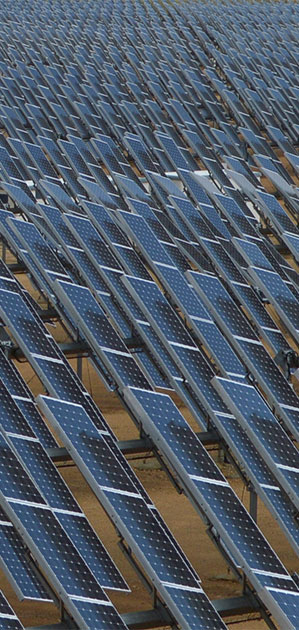Congress Extends Tax Credits for Renewables
The U.S. renewable energy industry got a welcome boost this week when Congress agreed on an omnibus spending bill that includes a five-year extension of the investment tax credit for solar and wind power projects. The bill will be voted on Friday and is expected to pass both houses and to be signed by President Obama.

Many in the solar power industry had been bracing for the end of the tax credits, which were due to expire on January 1, 2017. The program provides a tax credit of 30 percent of the value of solar and wind projects and has helped solar installations grow at an annual rate of 76 percent since the program was implemented in 2006. The wind credit has been sporadic, as Congress has several times let it expire and then voted to extend it by only a year or two. The wind credit had not been extended since expiring at the end of 2014.
Under the new scheme, the 30 percent solar tax credit will extend through 2019 and then decline gradually to 10 percent in 2022. After 2022 the credit will be eliminated for residential solar installations and will continue at 10 percent for commercial ones. The wind credit will apply to projects that have come online since the start of this year and will continue through 2019, gradually diminishing each year, before going away in 2020.
News of the deal sent the share prices of big solar manufacturers and installers—which have faltered badly in the stock market this year—soaring. Shares in SolarCity have climbed 55 percent in the last week, and those of SunEdison 51 percent. The Guggenheim Solar exchange traded fund, which tracks key solar stocks, has gone up 19 percent in that period.
According to GTM Research, the tax credit extension will result in 25 gigawatts of additional solar capacity over the next five years, driven by $40 billion in new investment between now and 2020. Annual solar installations, the firm said, will reach 20 gigawatts by 2020—more than the total installed capacity in the United States through the end of last year. Bloomberg New Energy Finance made a slightly more modest prediction, saying that the extension will add another 20 gigawatts of solar power through 2020, with wind contributing another 19 gigawatts over that period.
Whatever the eventual numbers turn out to be, it’s clear that Congress has boosted the prospects for renewable energy as the country tries to meet its obligations under the Paris climate agreement signed last week.
Keep Reading
Most Popular
Large language models can do jaw-dropping things. But nobody knows exactly why.
And that's a problem. Figuring it out is one of the biggest scientific puzzles of our time and a crucial step towards controlling more powerful future models.
How scientists traced a mysterious covid case back to six toilets
When wastewater surveillance turns into a hunt for a single infected individual, the ethics get tricky.
The problem with plug-in hybrids? Their drivers.
Plug-in hybrids are often sold as a transition to EVs, but new data from Europe shows we’re still underestimating the emissions they produce.
Stay connected
Get the latest updates from
MIT Technology Review
Discover special offers, top stories, upcoming events, and more.